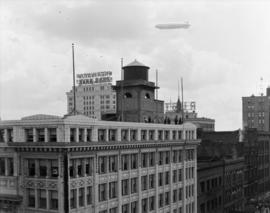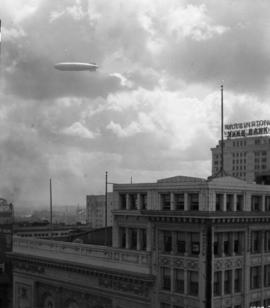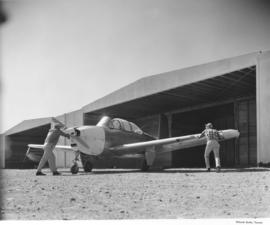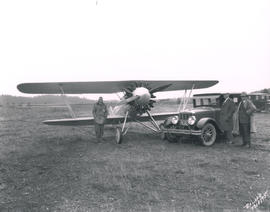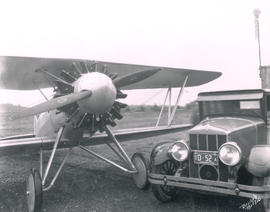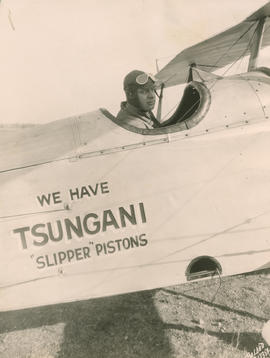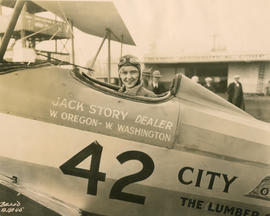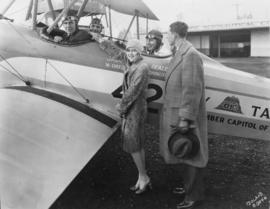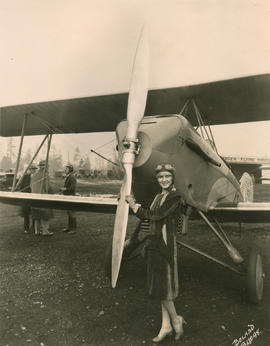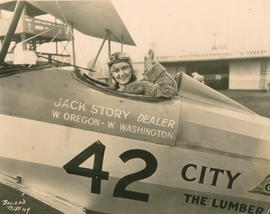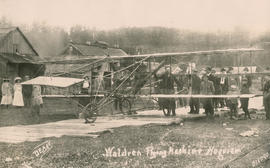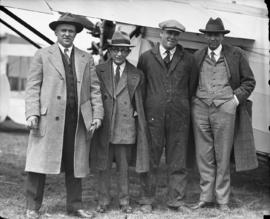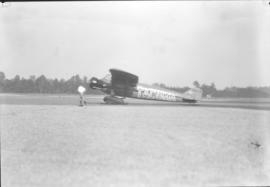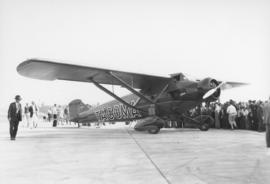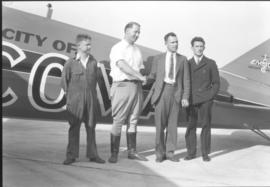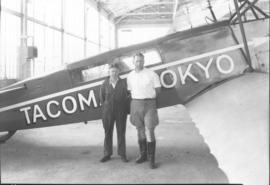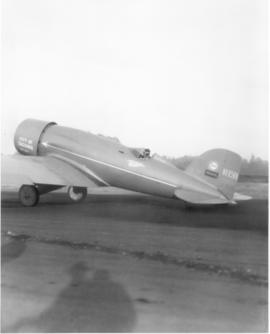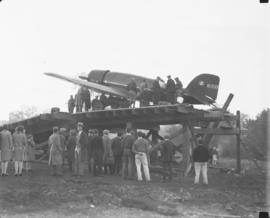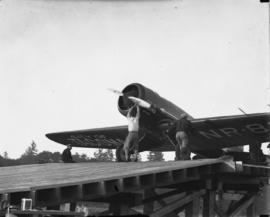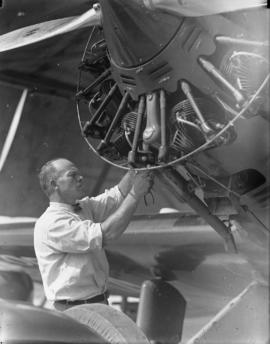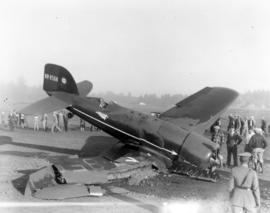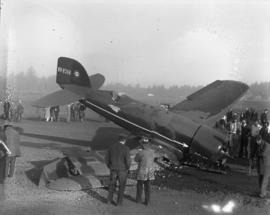- Item
- 1934-08-22
Part of Richards Studio Photographs
On August 22, 1934, several men standing on the roof of the Jones Building (now known as the Pantages) craned their necks to watch the airship Macon fly over the downtown skyline. Thousands lined the streets and rooftops of buildings to watch the dirigible make a wide circle over the city around 8 a.m. Construction of the dirigible cost the US two and a half million dollars. Tacoma was also visited by airships Shenandoah in 1924 and Akron in 1932. The Macon was lost over the Pacific Ocean offshore of Point Sur Feb. 12, 1935. (T. Times 8/22/1934, pg. 1)
Airships--Tacoma; Jones Building (Tacoma); Historic buildings--Tacoma;
